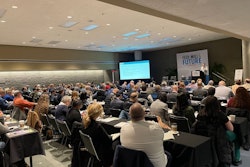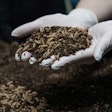
Scrolling Twitter last week, I stumbled upon a thread about the onset of the recent spike in ocean temperatures and its potential effects, when one tweet jumped out at me:
“We will see extremes we have never observed before this year. There’s little doubt in my mind,” wrote meteorologist and climate specialist Jeff Berardelli (@WeatherProf). His prognostication doesn’t seem far-fetched once you start to dig into the data.
Heat-trapping greenhouse gases and El Niño will likely cause global temperatures to surge to record highs over the next five years, according to World Meteorological Organization (WMO). Meanwhile, the United Nations warns it will be the warmest period ever recorded.
Global temperatures will likely hit 1.5 degrees Celsius (2.7 degrees Fahrenheit) above pre-industrial levels warming threshold between now and 2027, WMO reports. At this point, this marker is considered temporary and is not to be confused with the 2015 Paris Agreement's long-term temperature increase it seeks to avoid.
In addition to human-caused climate change and the onset of El Niño conditions, experts cite a perfect storm of several factors contributing to the extreme heat trajectory, pushing temperatures into “uncharted territory”:
- The eruption of Hunga Tunga, the underwater volcano that launched heat-trapping water into the stratosphere;
- New shipping emission regulations that reduced the amount of sulfur in the atmosphere, allowing more of the sun’s heat to be absorbed by the ocean;
- Weaker trade winds failing to cool off ocean surface temperatures; and,
- A lack of Saharan atmospheric dust deflecting sunlight.
El Niño’s climate-shifting effects touch nearly every region of the world — and the years following it are typically the hottest, meaning 2024 will hit extremes. Add in unprecedented ocean temperatures and there’s potential for “supercharged” global weather events.
In response to current conditions, U.S. corn and soybean futures ticked upward due to dry weather fears affecting this year’s crops, as 45% of major Midwestern crop-producing areas are in some stage of drought.
“This will have far-reaching repercussions for health, food security, water management and the environment,” says WMO Secretary-General Petteri Taalas. “We need to be prepared.”
How can feed producers prepare?
In addition to the expectation of higher raw material costs, the extreme growing conditions increase the prevalence of mycotoxins. To reduce exposure and improve feed safety, supercharge your monitoring beyond grain quality to include monitoring weather conditions in key growing regions to prepare for and mitigate mycotoxin risk.
For more on mycotoxin coverage, visit feedstrategy.com/animal-health-veterinary/mycotoxins.
















